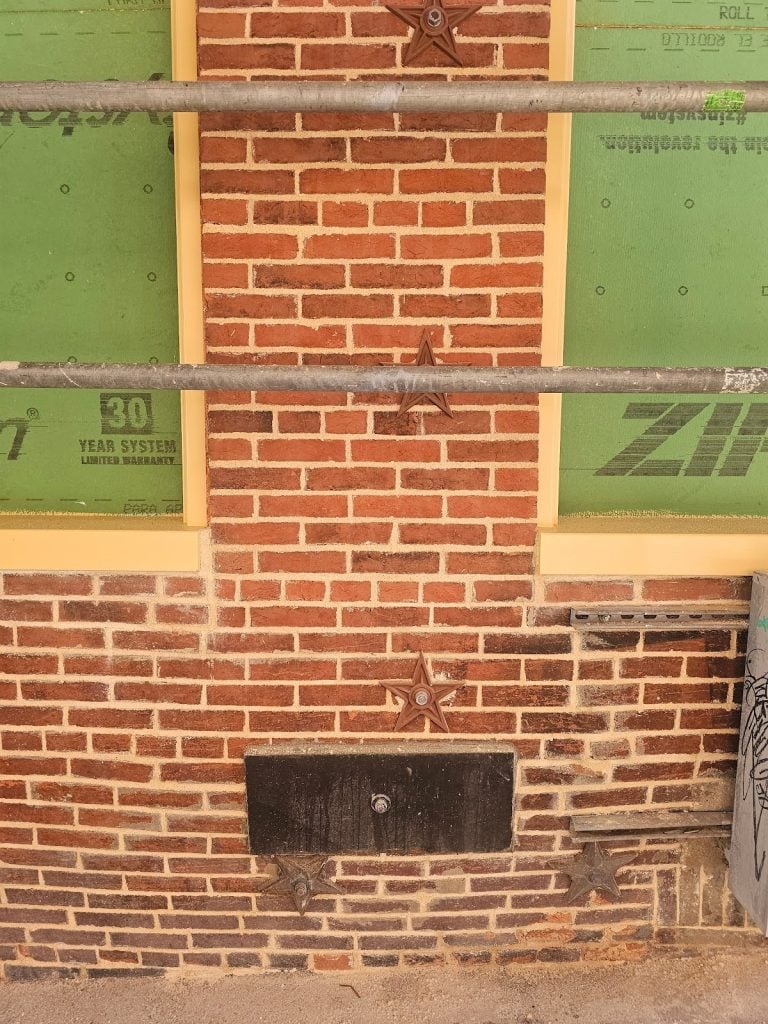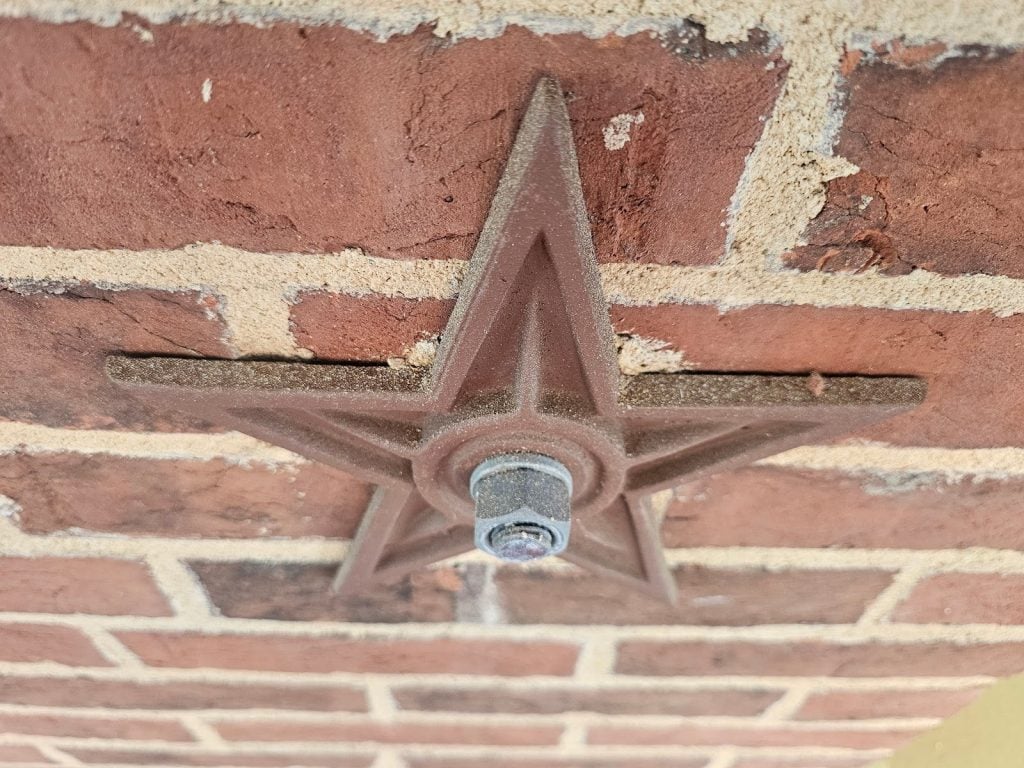Structural Deflection Issues in Masonry Facade
This past week we took a look at a building with severe lateral deflection at the base of the masonry facade. This masonry building is made of brick. The brick is historic like so many buildings here in Washington DC. These historic bricks were pretty strong for a few reasons. They are built with solid clay. That’s different from many modern bricks. Many modern bricks instead are built with a hollow clay type construction. The hollow clay is much lighter. And even though it is hollow it’s fired at a higher temperature in modern times which also increases the strength, to a degree.
This past week we looked at one particular area of a historic brick facade near the base of the wall. We showed that the brick masonry had already been repointed. You can see it has a relatively consistent mortar condition throughout. Repointing is a process that involves removing the deteriorated mortar at the exterior of the facade. After the deteriorated mortar is removed, the joint is clean. Then once the joint is clean, it is hydrated sufficiently so that the otherwise dry mortar and masonry doesn’t wick excessive amounts of water from the new mortar. The new mortar is then applied into those joints in a stipple type process, generally in successive small lifts.
The steps may sound complicated, but the application, while extremely tedious and arduous, is actually not the complicated part. Understanding the mortar characteristics has several implications for the compatibility of the new motor used in repointing. That aspect of the process is generally much more complicated than the actual work. Here in our geographic market area and probably much of the rest of the remaining parts of the world, the individuals working in the real estate industry are often looking for a quick deal and sometimes they end up inadvertently cutting corners.
Often, we find that they use or hire people to do the repointing who are not trained. Instead of hiring a specific trade contractor like ourselves, they will often go get somebody else to do it who doesn’t know much about the actual work of repointing and historic masonry restoration. When that happens, it can be bad. It can lead to really big problems. Some of those problems can be so detrimental that the cost of later rework is extreme.
The picture below shows a series of cast iron earthquake washers installed in a vertical row between an area of two windows. This wall had experienced sagging and bowing in the past. Generally, these types of plates and reinforcements are installed at areas coincidence with the floor joist system. The floor joist system can often provide resistance to stiffen and back up the internal plate which can fix the external washer in a position of resistance.

Looking back up at the picture above, you can also see that in addition to the earthquake washers, they’ve also installed a flat metal plate. This flat metal plate is used strictly for functional purposes. It clearly doesn’t have any particular aesthetic benefit to the historic building. Plates like this were hardly even ever used at the time of the original construction of this building.
A closer view of a historic star follows below. In some cases people install them here in Washington DC, just for decorative purposes. And in addition to their structural use, they have a very interesting aesthetic. They look both Industrial but strong in a cool kind of way.

In the center of the star you can see the bolt that goes through to the interior. That bolt is secured at the face of the start with a steel nut. We would recommend the installation of a steel washer as well, between the star and the nut. A washer helps extend the area of pressure between the nut and the star.
We can Help
Our company focuses on historic restoration more than modern building upkeep, maintenance, and construction, but our company understands both types of construction very well and a full picture well-rounded approach is needed in any niche in the construction industry. Although we focus on historic restoration, repointing, tuckpointing and historic brick repair, our company also has technical knowledge and competencies in the areas of modern and contemporary construction as well as we become one of the leaders in that area of the market today. Understanding both historic and modern or contemporary construction is useful because both aspects help understand the challenges and potential solutions for challenges in building science and construction.
We can help with a variety of historic masonry restoration needs and upkeep, from modest tuckpointing and or repointing to complicated and extensive historic masonry restoration. Infinity Design Solutions is a historic restoration specialist contractor specializing in both historic masonry restoration such as tuckpointing our repointing, and brick repair. If you have questions about the architectural details or facade of your historic building in Washington DC, reach out and say hello and if we can help we’ll be glad to assist you. You can email us or call us on the telephone at the following link: contact us here.
